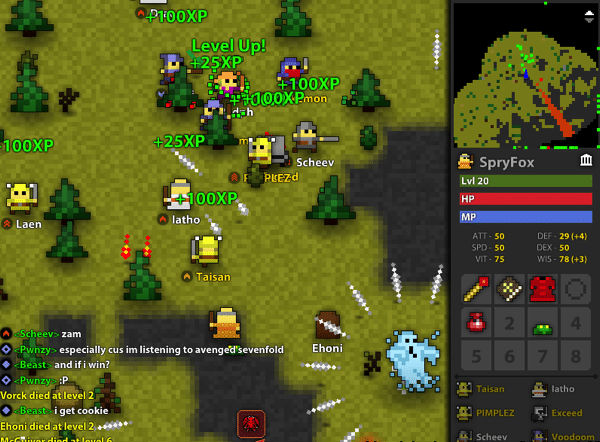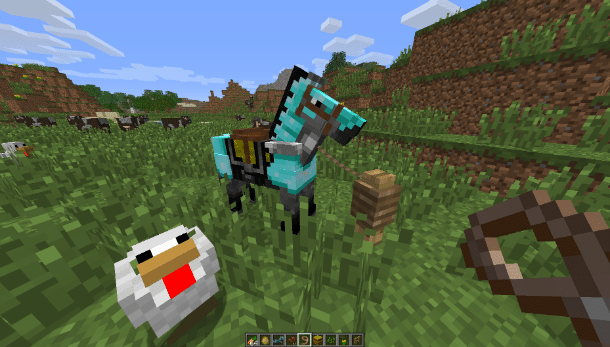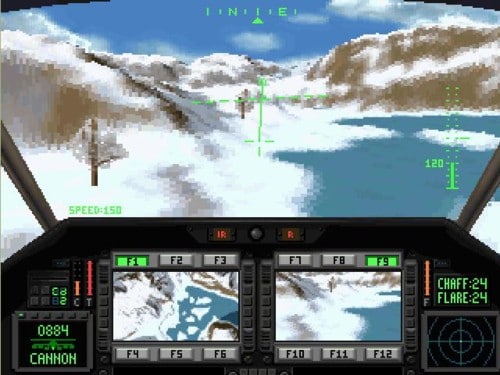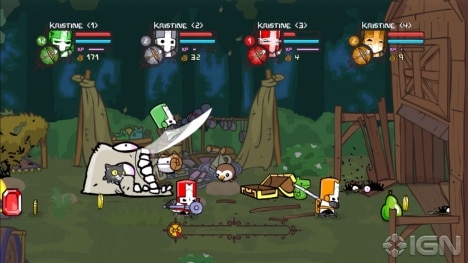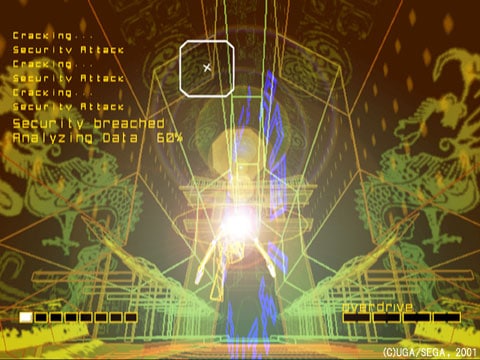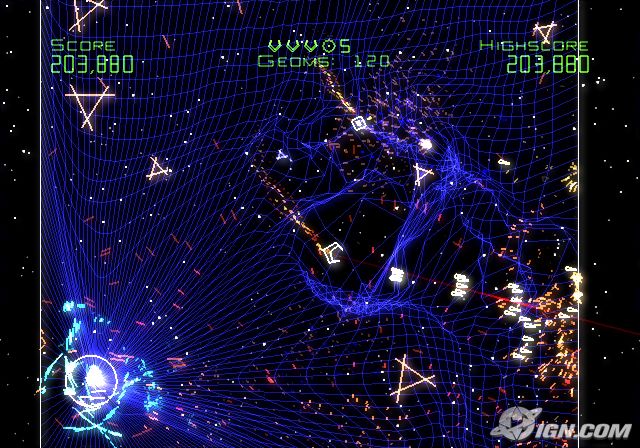One man game development studios are becoming more and more common these days and plenty of them are having success. That said, what do you do when that one man doesn’t happen to be an artist? This post looks at some of the options the Indie game developer has for creating or acquiring art for their game.
Pixel Art
Big chunky pixels that look like they jumped out of the 1980s are becoming more and more common and there is a good reason for it. Creating Pixel art is easy, at least relative to other art styles. Don’t get me wrong, it still requires some artistic talent… representing a complex object with a few blobs is certainly a skill. That said, you can churn out a ton of pixel art in a very short period of time. The downside to pixel art, if you don’t like the aesthetic ( like me ), you are greatly limiting the appeal of your game.
Pixel Art Example:
Realm of the Mad God
Realm of the Mad God is probably one of the most successful pixel art titles. As you can see, it has a very simple aesthetic, harking back to games from the NES era… and possibly earlier.
If I am honest, far too many Indie titles are pixel art based… because it is probably the most accessible art style. As a result, I am overwhelmingly sick of it. It takes a hell of a lot of buzz to get me to even look at a game using this art style now. Of course, that’s just me… plenty of people still love pixel art, so you will have an audience.
Pixel Art Tools
At the end of the day, any image manipulation tool that supports a “fat grid” can be used. A fat grid is a zoomed in view that shows each individual pixel extremely scaled up, as well as a view of the image at its regular size. This means your traditional raster graphic packages such as Photoshop, The GIMP, and Paint.NET can all be used. Of course, a great many (insane???) people just use Paint that comes with Windows!
Additionally, a number of Pixel Art focused tools have been developed over the years as well.
Pyxel Edit — in beta, written in Air
aseprite — Allegro Sprite Editor. In pixel art style itself
Pixelmator — MacOS only raster graphics application. A vastly cheaper alternative to Photoshop with pixel friendly tools
Grafx2 — a free pixel art oriented graphic application inspired by Deluxe Paint. Open source too if that’s your thing
GraphicsGale — available as shareware, another pixel art focused application
ProMotion — another pixel oriented editor, this one is commercial and has been used to create several commercial games. Not sure about its development status.
PD Pro — commercial software. A Photoshop alternative that is vastly cheaper than photoshop
UltimatePaint — another Deluxe Paint derived painting app
Pixen — another Mac only pixel editing app. Beta is available free, otherwise its $15.
Frankly, at the end of the day, any pixel based image editing tool will do. Some of the above programs do make more complicated tasks like animating or lighting a great deal easier than just using Paint, so looking into a dedicated app is certainly worthwhile. Oh, and if you are under 30, you may be wondering WTF Deluxe Paint is? Simply put, it was THE 2D game art package for the Amiga. I think it’s safe to say that most games in the early 90s had their art drawn in Deluxe Paint! Since those days, its become the benchmark of sorts for game art packages.
Tutorials
YouTube Video on pixel Art using GIMP
Pixel Art for games ( using Photoshop )
PixelJoint — The sites all about pixel art and hosts a series of tutorials.
FinalBossBlues — Another series of pixel art tutorials
My personal opinion… Pixel art is way overdone, I am sick of it and have to imagine many other people are as well. That said, its the easiest art form for a non-artist to crank out.
Voxels
Voxels are the pixel art of the 3D world. Voxel is an amalgamation of the worlds VOLUME + Pixel. So, basically they are a pixel with depth, which in every day parlance is what we call a cube. Voxel worlds are made up of thousands and thousands of cubes… like a gigantic lego set. Minecraft wasn’t the first voxel game, not by a long shot ( there was a company called Novalogic that was obsessed with Voxels ), but it was easily the most popular.
Voxel Example:
Minecraft
Comanche Maximum Overkill ( 1992! )
Voxel Tools
There are a number of tools available for editing voxels, some free, some not so free.
Voxel — create Voxels on your iPad or iPhone. Export in OBJ/MTL format or in Minecraft’s .binvox format. Free
Sproxel — free voxel editor. Seems to have been abandoned in 2012. The last version was Windows only, prior version available for MacOS. Free
Q-Block — free, online, simple Voxel editor
Paint3D — $20. Windows application for editing voxels.
Zoxel — I think it is free. Available for Linux and Windows, can export in OBJ.
Voxelogic Acropora — Much higher end product than the above, for creating ultra high resolution landscapes. Commercial, $90, with demo available
Cubicle Constructor — Probably the most polished looking app of the above. Prices range from free to $80.
Personally, and this is just me, I’ve always hated voxels. These days, a voxel game is going to look like a Minecraft clone as there were SOOOOO many Minecraft clones out there. That said, Voxels work a lot like lego, so if you can create something visually impressive in lego, you can do the same in Voxels.
Vector Graphics
Vector graphics are increasingly common, as you can support multiple resolutions using a single art asset. Since files are stored as a series of vectors, the image stays sharp regardless of how large or small it is scaled. This can be a huge boon when supporting multiple resolutions, especially with mobile devices. In many ways, constructing an image using vector graphics is similar to working with construction paper. You essentially layer shapes on top of other shapes to make more complex objects. Working with vector graphics is a great deal more difficult than pixel art, but isn’t outrageously difficult.
Vector Graphics Example:
Castle Crashers
Vector Graphic Tools
There are fewer vector graphic applications and some clear favourites when it comes to game creation.
Adobe Illustrator — This is the Photoshop of vector graphics. It’s also got a LOT of stuff in there that you don’t need, as the package was originally made for doing page layout in the print world. Still probably the most used professional tool. Expensive! Only available by subscription now.
Adobe Flash — Increasingly Flash is becoming more and more about game creation. Flash Professional can be used to create and animate vector graphics, and commonly is! Also expensive. Only available by subscription now.
Inkscape — FREE! Great free vector graphic package. Very commonly used by those on a budget.
Corel Draw — another commercial vector graphic package. Targeted at the same market as Illustrator. Also expensive ( $500 )
iDraw — Mac/iPad only, quite cheap ( 10$ iPad, 30$ Mac ). I personally use this program. More intuitive than Inkscape, simpler than Flash/Illustrator. No timeline for animation though.
There are a couple 2D animation systems available as well. You can draw your character once, cut them into pieces, and let the software handle the animations. Note that these tools work with regular bitmap graphics, not just vectors
2D IK animation tools
Spine — 2D skeletal animation
Spriter — another 2D animation tool
Vector Graphic Tutorials
2dgameartforprogrammers — Has a ton of great vector graphic tutorials. Be sure to check out the Apache Helicopter tutorial.
Gamasutra tutorial — Same guy as above, great series.
Inkscape Tutorials — A series of, you guessed it! Inkscape tutorials. Not necessarily game related, but techniques still apply
3D Art
I’ve been a hobbyist at 3D graphics for about as long as there has been an industry and even still, I can only JUST make art good enough for a game, and even then I probably take 3x longer than an actual artist, and generate much lower quality work. Don’t kid yourself, 3D is as much a profession as programming. It will take you years to learn to the point your results don’t look like crap. Don’t worry, I wouldn’t mention it if there weren’t options for the less… talented. I will discuss those in a second.
If you are interested in pursuing 3D, you can find a list of the most commonly used 3D applications right here. Many of these applications have a price tag in the $5000 range. However, there is the freely available Blender package which is an incredibly capable 3D program for modelling, animating, and texturing. On the other hand, it isn’t an easy application to get started with. That is why I created this five-part series, Blender for Programmers. If you are interested in 3D, it is a good place to start.
3D for the less talented!
There are plenty of tools available with a much lower learning curve if you want to work in 3D. This section mentions a few of them.
Poser — Use existing character models. Dress them up, animate, and render or exports. You can easily create animated characters using this application and can buy a number of pre-made assets if the existing content isn’t enough for you. Poser costs between $200 and $400, although it is quite commonly on sale.
Daz Studio Pro — This program is a lot like Poser. However, it is free but comes with a lot fewer assets. I did a tutorial on creating a sprite sheet with Daz and The GIMP if you want an idea of what it is like. That said, although Daz is free, they will spam you A LOT. I still get two or three emails a week from them and it’s not trivial getting yourself removed from the mailing list!
Make Human — Create fully boned photorealistic humans with ease. Oh, and it’s free! Used to be a Blender plugin, but now it’s free.
Bryce — Create stunning landscapes with basically zero effort or talent. It’s rather amazing the results you can get from this guy!
Sketchup — Previously a google application for making 3D models for use in Google Earth. There is a gigantic repository of models available for free. If you need to create levels or cityscapes, this is a GREAT place to start. There was a recent article on Gamasutra on exactly this. Be careful with licensing issues though!
Sculpting Applications:
These applications are like working with 3D clay. Even with little skill, you can make some remarkably awesome results.
Sculptris — Free! Baby brother of ZBrush. Try it out, it’s free.
ZBrush — THE 3D sculpting application. $700.
3D Coat — In between Sculptris and ZBrush. $350. Often on sale on Steam, keep an eye.
Mudbox — Autodesk’s sculpting application. Most expensive in the list, $800.
Use existing assets
There are a HUGE number of assets available that you can buy or simply download online. You should be able to source a ton of your assets this way. The maxim You Get Way You Pay For isn’t always true, but it often is! On the other hand, simply because you paid for something doesn’t make it good! Working from many of these assets is tricky because they may not be suitable for games, may not be legally licensable, etc.
OpenGameArt — a huge repository of game focused 2D and 3D art assets.
Blend Swap — 8000+ freely available Blender Blend files.
Blender-Models — Another Blender model resource
Mixamo — 3d character model and animation on a pay per use basis. Much like Bryce and Daz but online. Upload your own model for animating, or buy one of theirs.
Content Paradise — (paid) content for Poser.
Daz3D models — (paid) content for Daz3D
Unity Asset Store — if you use the Unity 3D package, there is a huge asset store of ready to drop in assets and scripts
Turbo Squid — the biggest 3D object store. Huge variety of content, quality, and prices.
CGTrader — buy and sell 3D assets.
GameTextures — high-quality game-ready texture maps for sale.
There are a number of other asset stores available, this is just a small selection of the more common resources.
Programmatic Art
Of course, you always have the option of creating a game that uses strictly programmatic art. This is art that is generated by an algorithm instead of an artist.
Programmatic Art Example
Rez
Geometry Wars
Basically, if you go this route, your art is in mathematic form. On the one hand, generating your game art algorithmically has the advantage of minimizing the need for artists. On the other hand, it requires a completely different set of skills, especially when it comes to writing shaders! Fortunately, there are a few tools out there that help you create shaders visually.
Hire an Artist
Of course, you may also decide at the end of the day you need an artist! Obviously adding another person to your team can have a number of downsides… you will lose a certain amount of creative control ( and should by the way! Why are you working with an artist if you don’t trust their artistic direction? ) over your baby. Of course, there is also a loss in either ownership or a cost involved.
Paying an artist, how?
This part is always tricky… how much does an artist cost? Do you get what you pay for? Will they work for free? Will they work for a percentage? How much of a percentage should I give? What should I expect from an artist? What should an artist expect from me?
To answer all of those questions, it depends. It depends on so many things you can’t give a simple answer. Some games have much higher art requirements than others. Some people have a budget and can pay for contract work, others do not.
The easiest and most likely most successful option is collaborating with an artist you know in real life. Of course, this isn’t always an option and can still lead to massive friction once things become about real money. Make sure you establish the revenue split up front, and make sure fixed costs are accounted for before you start splitting up the pie. Also, be realistic that the pie may never actually arrive!
Contracting out pieces is a bit trickier. Probably the simplest is to pay X amount per asset. For example, pay 25$ for a textured tree model. Working on bid work is by far the most straight forward, but you need to be very specific in what you need from the artist. The more detail you can give, the better your relationship with go. Instead of saying ” I need a textured tree”, say “I need a textured tree, under 300 polygons, a single texture no larger than 512×512 using a power of 2 resolution”. As to determining the cost X… well that is an art form in and of itself!
There is a good chance you have no money and are willing to offer a percentage of future profits in return for labour. If this is the route you are going, be VERY upfront about this, and don’t pester people that aren’t interested in such a work example. The further along you are in the project, the more likely you will be to acquire a good artist. If you can hand a game to someone with programmer art stand ins that the artist needs to replace, things will go a lot smoother. If you’ve got an idea only… get further along before recruiting, unless you know an artist personally. If you got an idea only… and that’s all you’ve got ( no programming skills ) I would generally suggest not wasting anyone’s time. In this day and age, amazingly enough, the idea is the LEAST important part of the process. Everybody has the next killer game idea! The reality is, its generally execution that makes a game great, not the idea. Exceptions exist, but they are exactly that, exceptions.
Where to recruit artists?
Real-life is obviously a great place, but not always or even often, an option. Otherwise, there are a number of places you can look for artists, often depending on the type of contract you are offering.
http://www.polycount.com/forum/ — They have a series of recruiting forums, for paid and unpaid work.
http://www.reddit.com/r/GameDevClassifieds — Post your jobs, make sure to note paid/unpaid status. Browse for artists looking for work
http://www.gamedev.net/classifieds — GameDev.net job boards, contract board, and hobby recruiting listings.
http://www.conceptart.org/forumdisplay.php?f=11 — Concept artists, not game artists, but there’s an amazing amount of talent here.
http://forum.deviantart.com/jobs/ — You get a WIIIIIDDDDDEEEE gamut of talent on this forum, many without game experience, but it is certainly another place to look, if even just to figure out payment amounts. Forums are for paid work only!
http://www.game-artist.net/forums/employment/ — Game art focused forums, have sub forums for all kinds of hiring.
Summary
At the end of the day, relationships are CRITICAL. The network of contacts you make will be one of the most valuable assets you can acquire. Deal fairly with people, don’t misrepresent yourself or your project, and act professionally. Even if you aren’t paying, act professionally. It will pay off massively in the long run. Also, keep in mind, every relationship is a two-way street. If you don’t like working with an artist you contact walk away ( … if not in breach of contract! ), you will both benefit in the end.
Make as much clear upfront as possible… revenue split paid/unpaid, detailed specs, etc… the less ambiguity, the smoother things will go. Oh, and never pay 100% up front, EVER!
This post scratches only the surface of what is out there. As you can see, even if you don’t have artistic talent, there are tons of options out there for you! If I missed something you feel I should have included, let me know!

